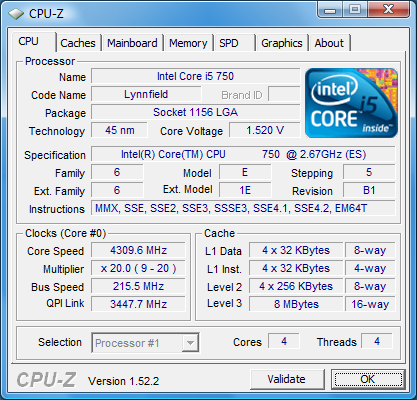Overclocked On Air: Intel's Core i5-750
Overcoming Stability Issues At 4.1 GHz
We took the Core i5-750 to 4.1 GHz using a 1.465V BIOS Vcore, but the system would not return from peak performance to idle without crashing. Further voltage modifications on the processor or platform side didn’t help. We were able to continue increasing clock speed after switching off C-states support in the BIOS.
Unfortunately, the system idle power went up by a massive 34W after performing this operation. While it allowed us to reach higher frequencies, this action also emphasizes how important it is to keep the processor in the lowest possible operation state when it's idle, meaning that transistors and entire functional units have to be switched off when they are not needed.
Final Speed: 4.3 GHz
A step up to 1.52V was required to reach 4.2 GHz reliably.
We reached 4.3 GHz on the Core i5-750 by applying 1.55V core voltage, but this setting wasn’t dependable. It was stable enough to run Fritz and take CPU-Z benchmarks, but we could not complete our entire benchmark suite. However, this setting isn’t something we recommend for everyday operation anyway, as power consumption has increased by 127W over standard settings. Let’s look at the performance levels you can reach through overclocking to as much as 4.2 GHz and how these changes affect efficiency.
Please have a look at our CPU-Z image gallery to look at all the speeds and settings.
Get Tom's Hardware's best news and in-depth reviews, straight to your inbox.
Current page: Overcoming Stability Issues At 4.1 GHz
Prev Page Speeding Up: Up To 4 GHz With More Voltage Next Page Clock Speed/Voltage Table And Test Setup

